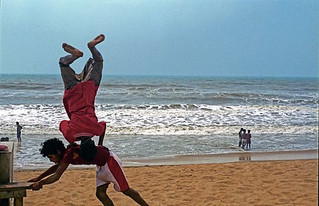 |
| Photo: Ruben A.Navarrete |
1. Attitude. I recently met a man who had been paralyzed from a car accident when he was 21. He had an unusually positive attitude, so I asked him how long it took him to accept the fact that he was paralyzed. His surprising answer was "about 3 months." He told me how God used the accident to change his life and show him that he was not living how he should. So now he is--from his wheelchair. He just got married and is working and volunteering. He is not bitter, angry or depressed but sees his wheelchair as his legs, and it takes him everywhere.
Having the right attitude will help you this new year because you can see your life as an opportunity instead of a struggle. Even if your circumstances are hard, such as being overweight or struggling with a health condition, you can still make the most of what God has given you. If you can walk, don't just sit. And if you can run, don't just walk. Use your body to its utmost potential this year!
2. Exercise. This is one area that only you can control. You can choose to be lazy or active. It takes work and discipline to exercise effectively, but everyone can do it in some form. Picture yourself 10 or 20 years from now. What physical condition do you expect to be in? If you don't take practical steps in that direction, you will likely fall short of that goal.
3. Time. How have you spent your free time this year? Do you have any regrets? Did you spend more time on Facebook and Instagram than playing with your kids? Did you waste time on TV or video games? There is a time for restful leisure, but at the end of next year, wouldn't you rather say you trained for a marathon or went skiing or hiking instead of just talking about the latest celebrity news? Remember that you are not guaranteed another day or another year. Think about what really matters in your life, and invest your time wisely.
4. Excuses. Making excuses for an unhealthy lifestyle will only put you in the same or worse condition this time next year. Everyone is tired of your excuses, and you should be too. Don't blame anyone or anything else. Simply choose to take charge of your body right now and all year long. If you have lost a good amount of weight this year, I can guarantee it was because you worked your tail off. And it has paid off!
One of the most important things in life is to leave a legacy. You cannot take anything with you to the grave, but you can take souls to heaven with you. You may not be the next Billy Graham, but maybe your son will. Or maybe the person you influence will become the next Mother Teresa. Maybe you will start a company that gives millions to cancer research. Or maybe those two pints of blood you donate will save a child's life.
















